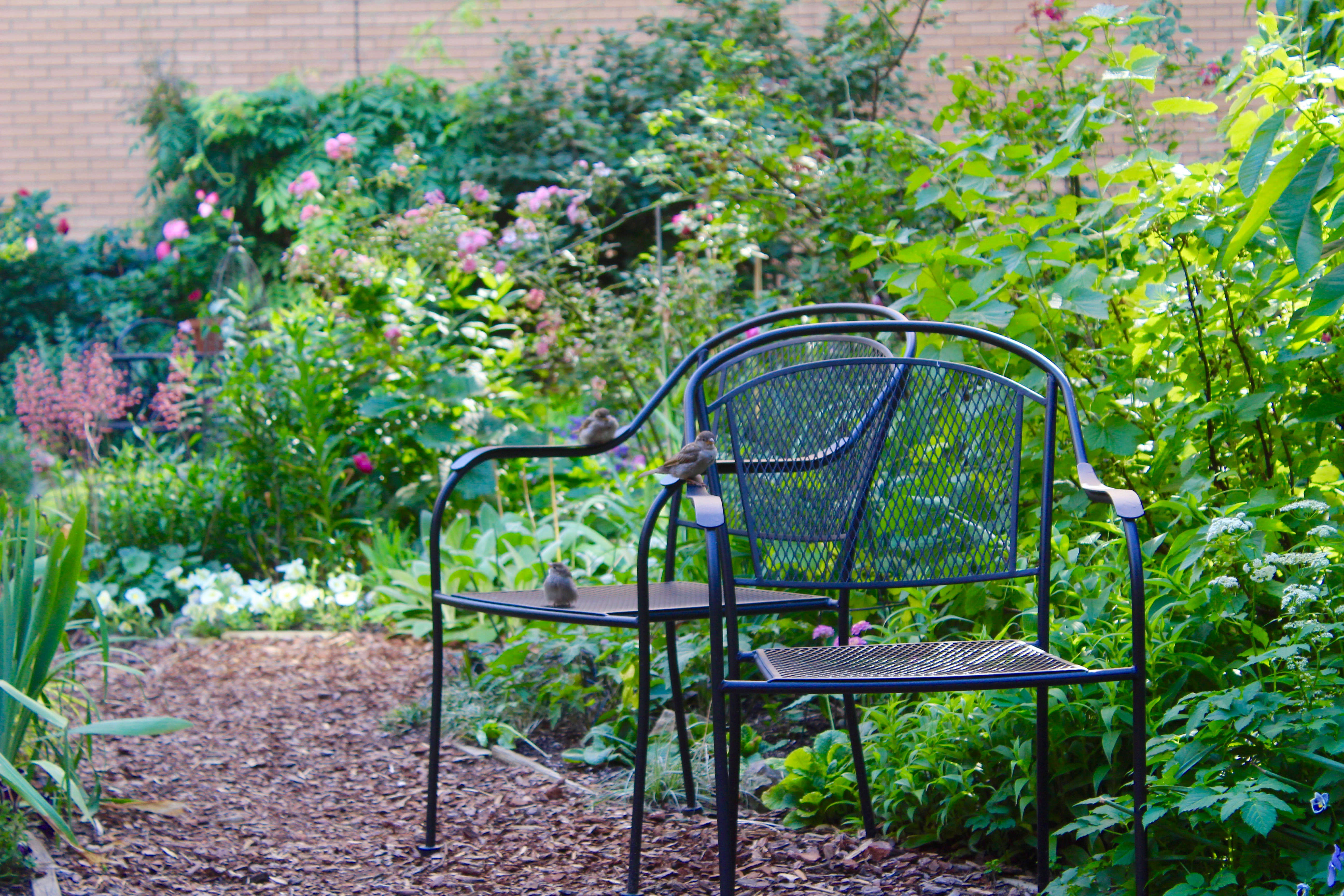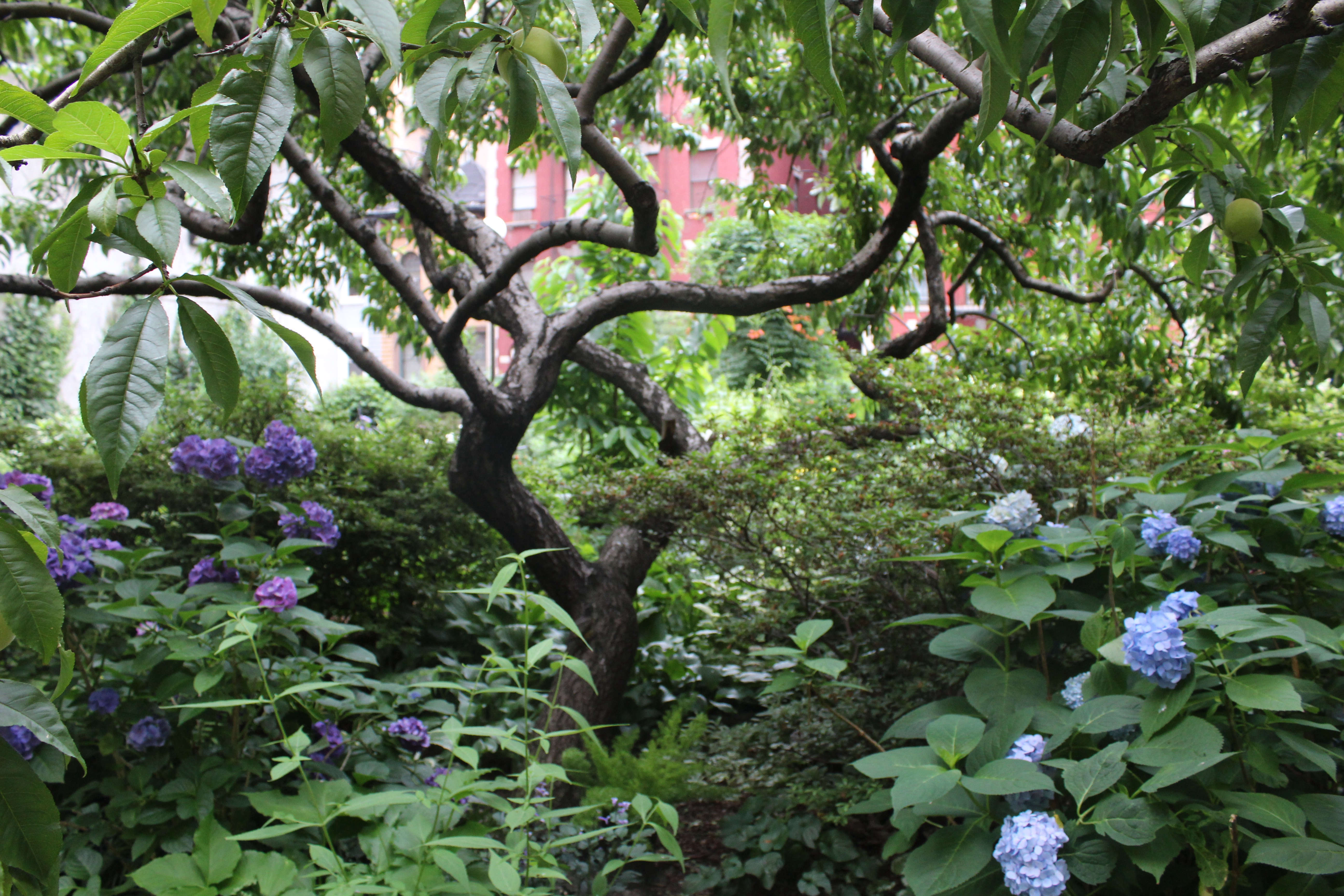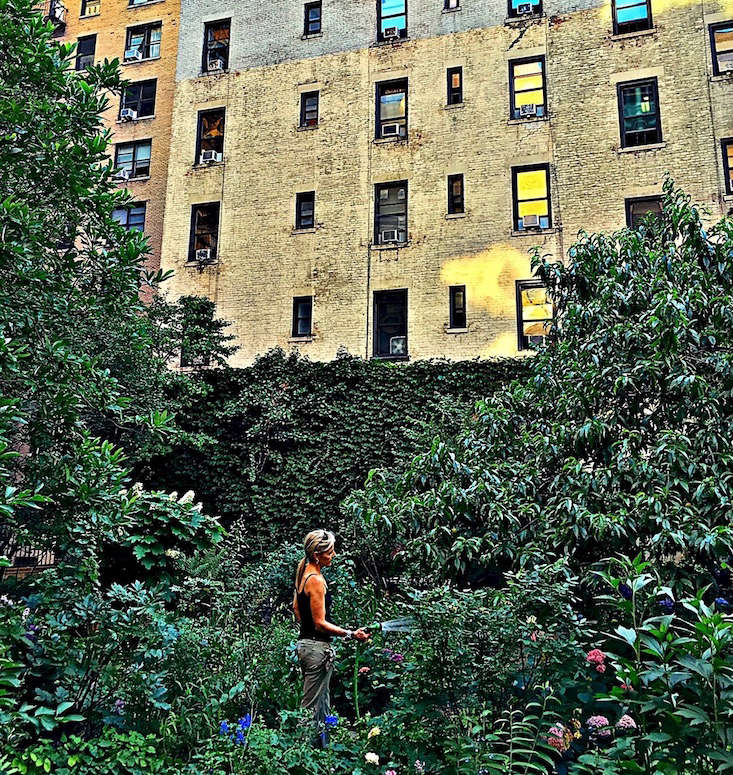The first time I visited the Lotus Garden, a rooftop green space on Manhattan’s Upper West Side, I had my four-year-old in tow. We had walked past the garden’s iron gate on West 97th hundreds of times, but we’d never climbed the stairs to take a peek. As soon as we reached the landing at the top of the steps, my daughter looked around wide-eyed at the trees and flowers and winding paths and said one word: “magical.” She’d just learned the superlative from a favorite book, and had taken to using it to describe everything from subway cars to macaroni and cheese. This time, however, she was spot on. Nothing on the street below suggested the beauty of this 7,000-square-foot oasis, hidden atop a busy parking garage, just steps from the traffic and chaos of Broadway.
That was more than 20 years ago. Soon thereafter I joined the 25 or so gardeners who maintained the garden and started tending my own plot.
Photography by Monica Michael Willis for Gardenista.

At the time, I couldn’t tell an astilbe from a columbine and knew next to nothing about gardening in general. More seasoned veterans took me under their wings, showing me how to prune roses, divide hostas, even plant bulbs, something I’d never done growing up in South Florida.


Unlike many community green spaces in Manhattan, the garden’s not owned by the city. It was born out a rare public-private partnership between local activists and developer William Zeckendorf, Jr., who agreed to build the rooftop space as part of his plans to develop the Columbia, one of the first 35-story condominiums above 96th Street.



An astute businessman, Zeckendorf envisioned the green space as an amenity for future tenants, but understood that the garden could generate goodwill in a neighborhood leery of developers and losing its green space. In addition to giving the garden $25K for start-up costs and a $50K endowment, the developer made sure the roof of the condo’s parking garage had a state-of-the-art drainage system and, more important, could support the weight of two-and-half feet of soil and another six inches of gravel.

The garden was the brainchild of architect Mark Greenberg and horticulturist Carrie Maher, neighborhood residents who spearheaded the negotiations with Zeckendorf in the early 80s. Three decades later, the couple’s thoughtful layout and early plant selections still give the garden an airy, expansive feel that belies its actual footprint.


There are curvy paths, multiple seating areas, and a nice mix of trees—dogwood, tulip magnolia, holly, mountain ash—which offer more and more shade and privacy as the season progresses. The couple selected a leafy dwarf peach tree (it was on sale at local plant store) to anchor the center of the garden, and planted ‘Sweet Autumn’ clematis and Concord grapes to soften the iron railings at the space’s northern edge.


Today, more than 30 years later, a handful of the original gardeners still maintain plots. Although much has stayed the same, the Lotus Garden recently received nonprofit 501c3 status and has expanded its community outreach, hosting school groups, storytelling events, occasional art shows, and an annual Halloween party.
We still operate on a shoestring budget, though, financing everything from hoses and mulch to spring bulbs and yearly arborist visits with money raised from gardener dues, donations, and the keys we lease to anyone who wants to access the community green space from April to November. (Keys cost $20 a year/$10 for seniors.)



For many of us, the garden has been a constant source of calm in a frenetic, sometimes overwhelming place. It’s a safe haven, where we can stop and smell the roses (literally and figuratively) and lean into the cadence of the seasons. And for some, it’s where we raised our kids, showing them that digging in the dirt’s good for the body as well as the soul—and that a real sense of community is possible even in one of the largest cities in the world. Despite years of familiarity with this small rooftop garden, its incongruous beauty still move me. Some people might call that magical.
For more rooftop gardens, see:
- Brooklyn Oasis: A City Roof Garden, Before and After
- Fresh as a Daisy: A Wildflower Roof on a Home Designed by Fraher & Findlay
- Ask the Expert: Roof Garden Basics with Designer Julie Farris









Have a Question or Comment About This Post?
Join the conversation